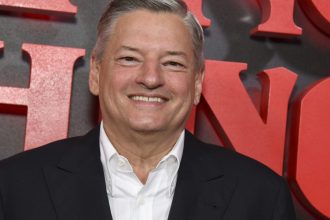In a poignant reflection on his childhood, neuroscientist Todd Sacktor remembers the impact of his sister’s death when he was just two years old. “An empty bedroom next to mine. A swing set with two seats instead of one,” he recounted, revealing the persistent void left by her absence. Sacktor’s only memory of her is faint: a moment in which he asked her to read to him, only to be brushed off with the words, “Go ask your mother.” A glum trip up the stairs to find his mother marked that memory.
Even more remarkable is that Sacktor retains this fleeting remembrance more than six decades later. Memory itself is a complex phenomenon, rooted in physical traces within the brain, where neurons imprint experiences through molecular processes. Yet, the exact mechanisms by which memories are encoded and retrieved remain unresolved questions in the field of neuroscience.
Driven to find answers, Sacktor became a neuroscientist at the State University of New York Downstate in Brooklyn, focusing on the molecular interactions that sustain the neuronal connections essential for memory. This inquiry into the nature of memory was famously posed by biologist Francis Crick in 1984: why do memories endure for years when the body’s molecules are replaced so frequently?
A collaboration in 2024 between Sacktor and his longtime colleague André Fenton from New York University led to significant findings published in Science Advances. They identified a persistent bond between two proteins associated with the strengthening of synapses, which are vital connections between neurons. This synaptic strengthening is believed to play a crucial role in forming memories. As proteins degrade, newer ones replace them in a molecular exchange that preserves the strength of the bond, and thus the memory it represents.
Crick had posed a biological riddle: “How then is memory stored in the brain so that its trace is relatively immune to molecular turnover?” This latest research offers a compelling answer, helping to resolve the apparent contradiction in how temporally fragile molecules can support long-lasting memories.
Neurobiologist Karl Peter Giese from King’s College London, who was not involved in the study, remarked that the researchers present “a very convincing case” that the interaction between these molecules is essential for memory storage, thereby addressing Crick’s longstanding question.
Sacktor’s journey into neuroscience was catalyzed by an early discovery. Under the mentorship of molecular memory pioneer James Schwartz at Columbia University, he established his own lab at SUNY Downstate to explore the biochemical underpinnings of long-term memory retention. He sought a molecule located in brain synapses.
In 1949, psychologist Donald Hebb suggested that the repetitive activation of neurons strengthens their connections—later paraphrased by neurobiologist Carla Shatz: “Cells that fire together, wire together.” This principle has been supported by decades of research indicating that stronger neuronal connections correlate with more enduring memories.
In the early 1990s, Sacktor conducted experiments using a slice of a rat’s hippocampus, a brain region critical for memory, to stimulate neural pathways in a manner resembling memory encoding. Each trial revealed elevated levels of a specific protein in the synapses. “By the fourth time, I was like, this is it,” he recalled, marking a significant milestone in his research journey.












